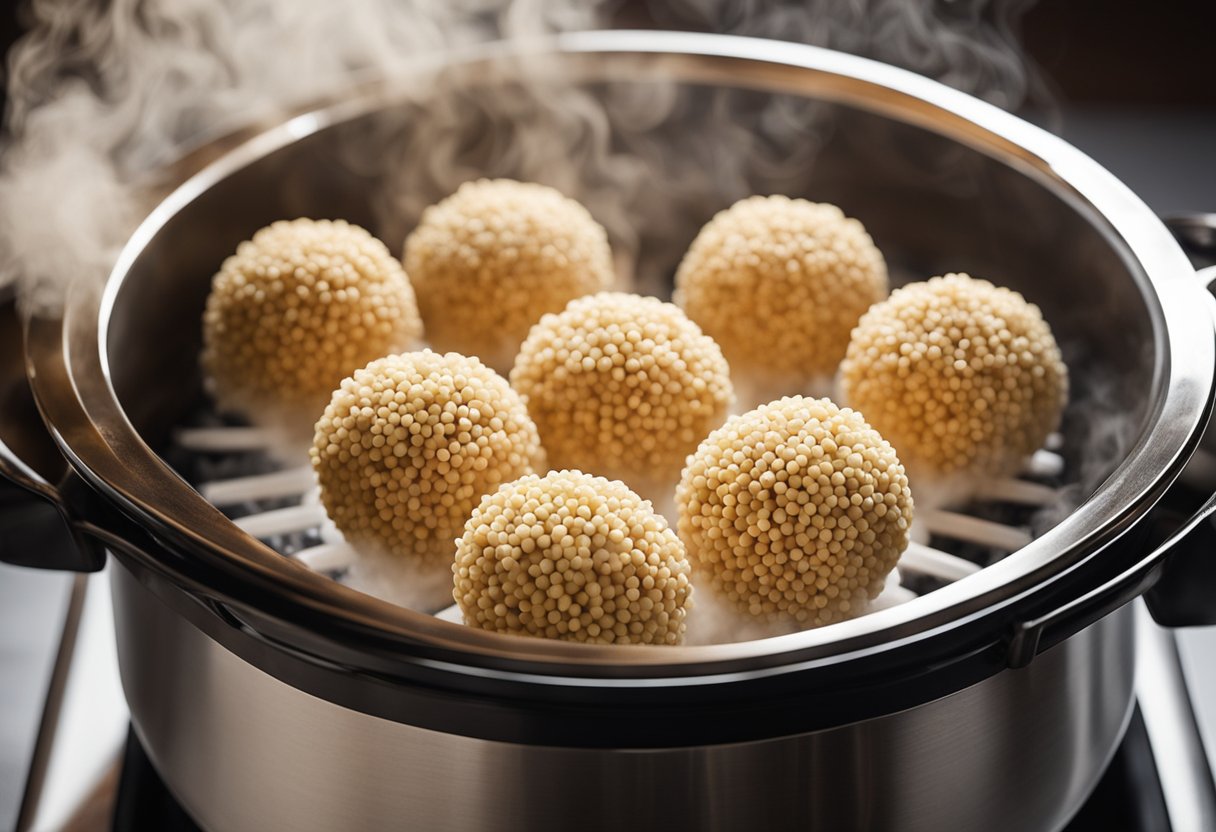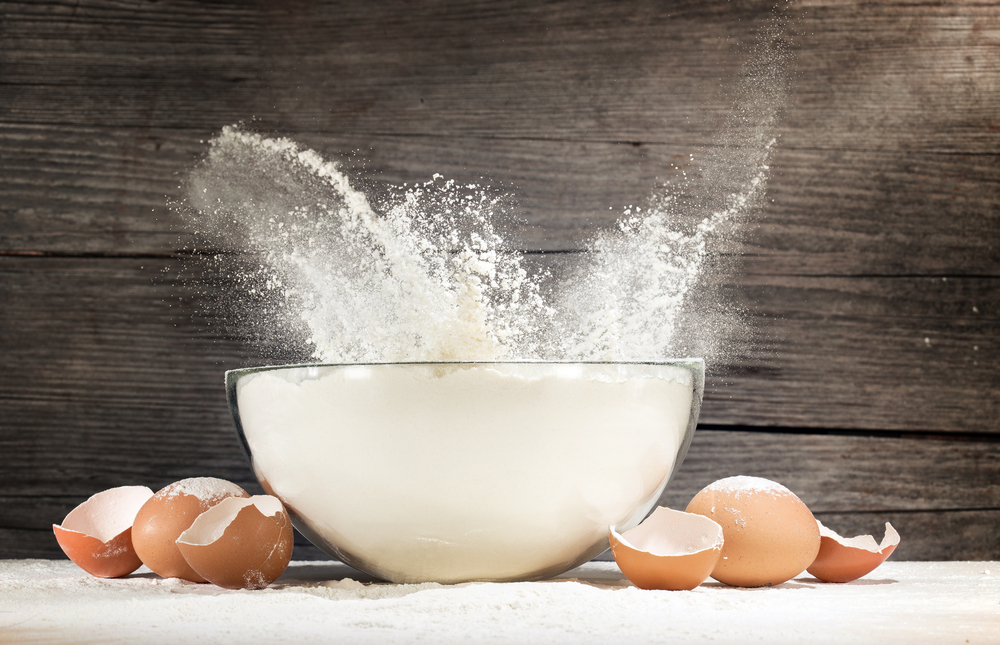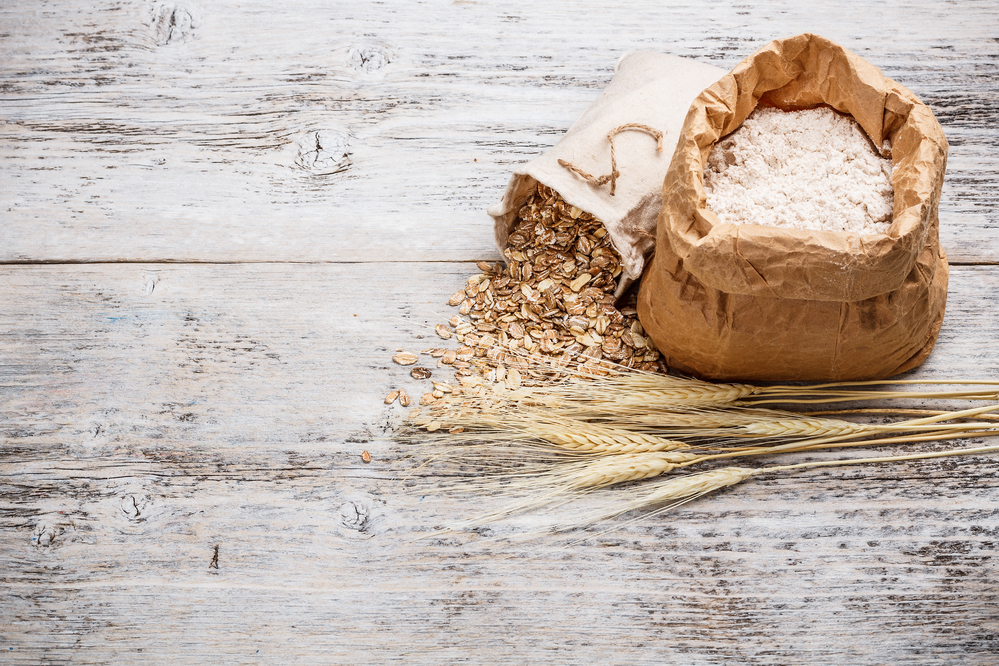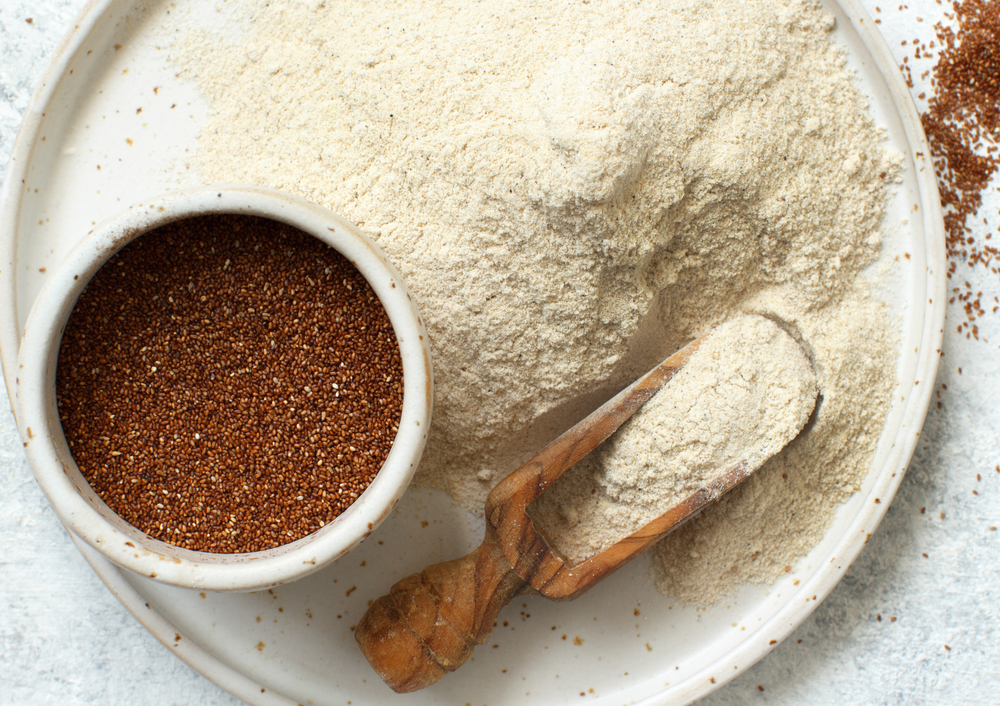I love couscous! It’s a versatile, delicious, and healthy side dish that can be paired with almost anything. But what do you do when you have leftovers?
Reheating couscous can be tricky, as it can easily dry out or become mushy if not done correctly. In this article, I will share with you some tips and tricks on how to reheat couscous so that it’s just as good as the day you made it.
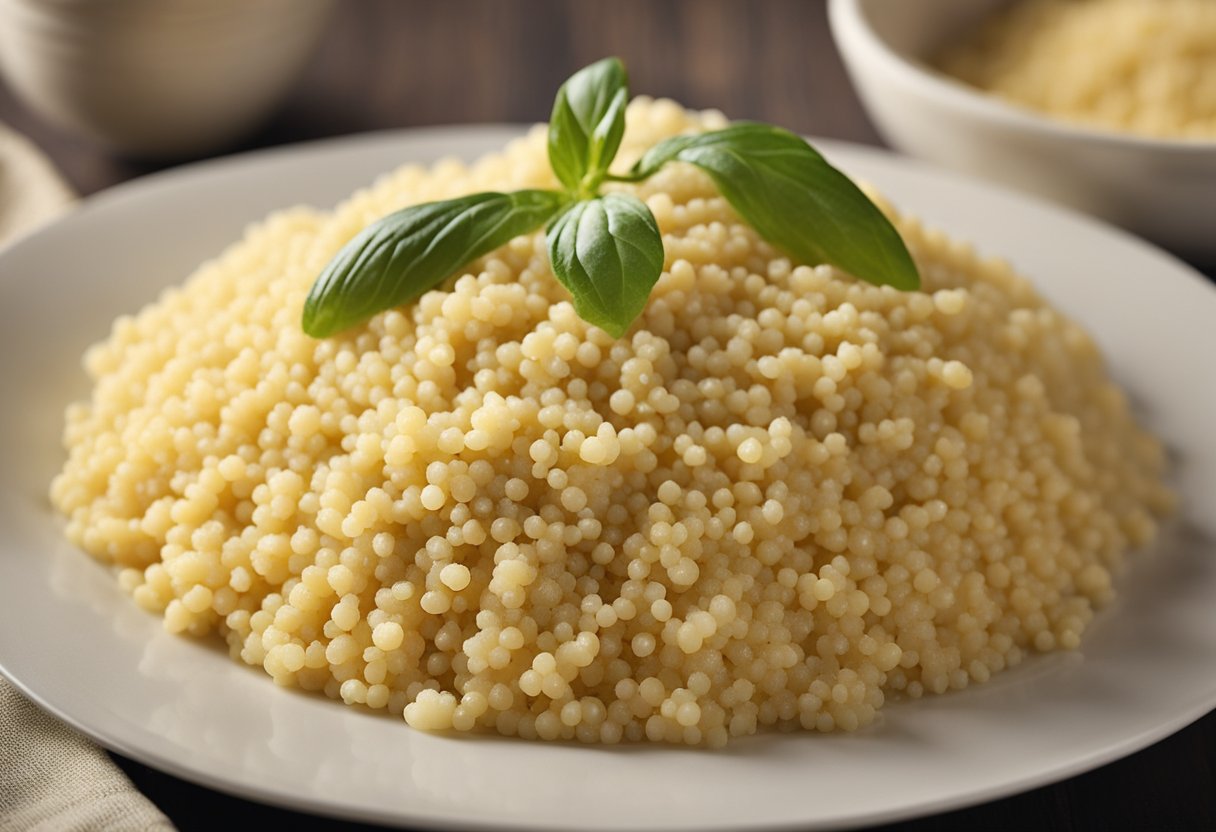
Understanding couscous is the first step in reheating it. Couscous is a North African dish made from tiny balls of semolina flour. It’s a staple food in many countries and is often served as a side dish or used as a base for salads and stews.
Couscous is easy to cook and can be ready in just a few minutes, making it a convenient option for busy weeknights. However, it’s important to note that not all couscous is created equal.
There are different types of couscous, including instant, traditional, and Israeli, and each requires a slightly different cooking method.
Key Takeaways
- Couscous is a North African dish made from tiny balls of semolina flour.
- Reheating couscous can be tricky, but the best method is to use a microwave and add a tablespoon of water or stock per cup of couscous.
- To store couscous, place it in an airtight container in the refrigerator for up to 4 days or in the freezer for up to 3 months.
Understanding Couscous
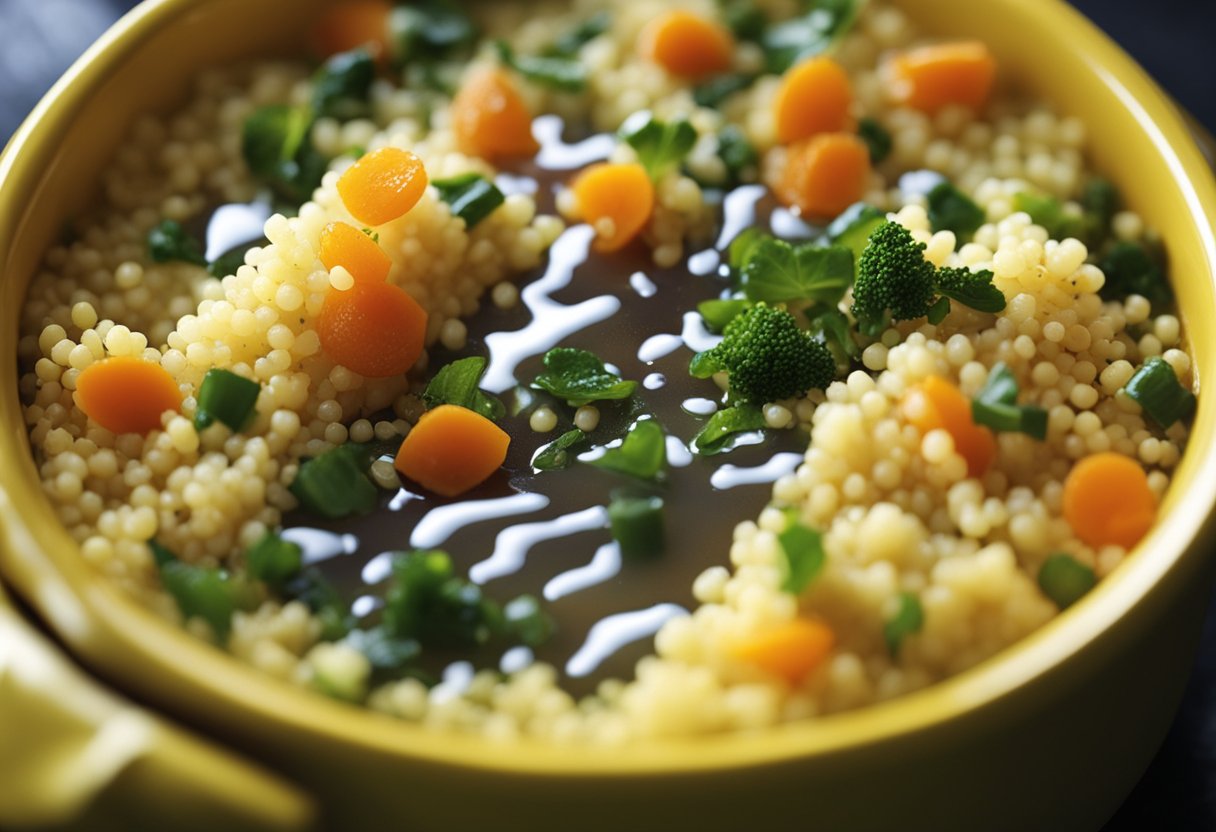
Couscous is a staple of North African cuisine that has become increasingly popular in recent years. It is a versatile side dish that can also be used as a main dish when paired with protein and vegetables.
Couscous is made from semolina, which is a type of grain that is derived from durum wheat. The semolina is mixed with water to form small pellets, which are then steamed until they are cooked through.
The result is a light and fluffy grain that can be used in a variety of dishes.
There are two main types of couscous: Moroccan couscous and Israeli couscous. Moroccan couscous is the more traditional variety and is made from small, fine pellets.
Israeli couscous, on the other hand, is made from larger, pearl-like pellets and is often used in salads and other dishes.
Couscous is also a great alternative to other grains like quinoa or rice. It has a mild flavor that can be easily customized with different herbs and spices. Additionally, it is a quick and easy dish to make, taking only a few minutes to cook.
Overall, couscous is a versatile and delicious grain that can be used in a variety of dishes. Whether you are looking for a side dish or a main dish, couscous is a great choice that is sure to please.
Methods of Reheating Couscous
When it comes to reheating couscous, there are a few different methods you can use. The best method for you will depend on your personal preferences, as well as the equipment you have available.
Here are some of the most popular methods for reheating couscous:
Microwave Method
The microwave method is one of the quickest and easiest ways to reheat couscous. To use this method, place your couscous in a microwave-safe dish and cover it with a microwave-safe cover or damp paper towel.
Microwave the couscous on high for 30-second intervals until it is heated through, stirring in between each interval. Be sure to add a tablespoon of water or stock per cup of couscous to keep it from drying out.
Stovetop Method
If you prefer not to use a microwave, you can also reheat couscous on the stovetop. To do this, place your couscous in a non-stick saucepan with a tablespoon of water or stock per cup of couscous.
Heat the couscous over medium heat, stirring occasionally, until it is heated through and the liquid has been absorbed.
Oven Method
Another option for reheating couscous is to use the oven. Preheat your oven to 350°F (175°C) and place your couscous in an oven-safe dish. Cover the dish with foil and bake for 10-15 minutes, or until the couscous is heated through.
No matter which method you choose, be sure to add a little bit of water or stock to the couscous before reheating to keep it from drying out. And of course, always use caution when handling hot dishes!
Tips for Reheating Couscous
When it comes to reheating couscous, there are several methods to choose from. The key is to ensure that the couscous is heated evenly, without drying it out or making it mushy.
Here are some tips to help you reheat couscous to perfection:
1. Use Water or Broth
Adding a tablespoon of water or broth per cup of couscous can help to moisten the grains and prevent them from drying out.
You can either drizzle the liquid over the couscous or mix it in before reheating. This method is particularly effective when using a microwave or skillet to reheat the couscous.
2. Add a Little Oil or Butter
If you want to add some extra flavor and moisture to your reheated couscous, consider adding a small amount of oil or butter.
Olive oil is a great option as it adds a nutty flavor that complements the couscous. Simply drizzle a teaspoon of oil or a small knob of butter over the couscous before reheating.
3. Use a Skillet or Saucepan
Reheating couscous in a skillet or saucepan is a great option if you want to add some extra flavor or texture to the dish.
Heat the skillet or saucepan over medium heat, then add a tablespoon of oil or butter. Once the oil or butter has melted, add the couscous and stir to combine. Cook for 2-3 minutes, stirring occasionally, until the couscous is heated through.
4. Fluff with a Fork
Whether you’re reheating couscous in the microwave or on the stovetop, it’s important to fluff the grains with a fork before serving.
This helps to separate the grains and prevent them from clumping together. Simply use a fork to gently stir the couscous, breaking up any clumps as you go.
5. Cover with a Lid
If you’re reheating couscous in the microwave, covering it with a lid or microwave-safe plate can help to trap in moisture and prevent the couscous from drying out. Simply place the lid or plate over the top of the dish before reheating.
6. Season to Taste
Finally, don’t forget to season your reheated couscous to taste. A pinch of salt, some fresh herbs, or a drizzle of your favorite sauce can all help to bring out the flavors of the dish.
Experiment with different seasonings and ingredients to find the perfect combination for your taste buds.
By following these tips, you can reheat couscous to perfection every time. Whether you’re using a microwave, skillet, or saucepan, these methods will help to ensure that your couscous is fluffy, flavorful, and ready to enjoy.
Storing and Freezing Couscous
When it comes to storing leftover couscous, it’s important to do so safely to avoid any risk of food poisoning.
Once it has cooled down to room temperature within a two-hour window, place it in an airtight container and store it in the refrigerator. Properly stored, leftover couscous should stay fresh for around three to five days. [^1]
If you want to extend the life of your couscous, you can freeze it. First, let it cool to room temperature before placing it in an airtight container or a freezer-safe bag.
Make sure to label the container with the date so you can keep track of how long it has been in the freezer. [^3]
To avoid freezer burn, it’s important to remove as much air as possible from the container before freezing.
You can also add a layer of plastic wrap or aluminum foil over the top of the couscous to provide an extra barrier against freezer burn. [^4]
When you’re ready to use your frozen couscous, thaw it in the refrigerator overnight. Once it has thawed completely, you can reheat it in the microwave or on the stove.
If you’re reheating it on the stove, add a little bit of water or broth to the pan to prevent the couscous from drying out. [^3]
It’s worth noting that couscous can be frozen both cooked and uncooked. If you have uncooked couscous that you want to freeze, simply place it in an airtight container or a freezer-safe bag and store it in the freezer.
When you’re ready to use it, let it thaw at room temperature before cooking it as you normally would. [^4]
Overall, storing and freezing couscous is a great way to extend its shelf life and reduce food waste. Just make sure to follow proper food safety guidelines and take steps to avoid freezer burn.
Serving Reheated Couscous
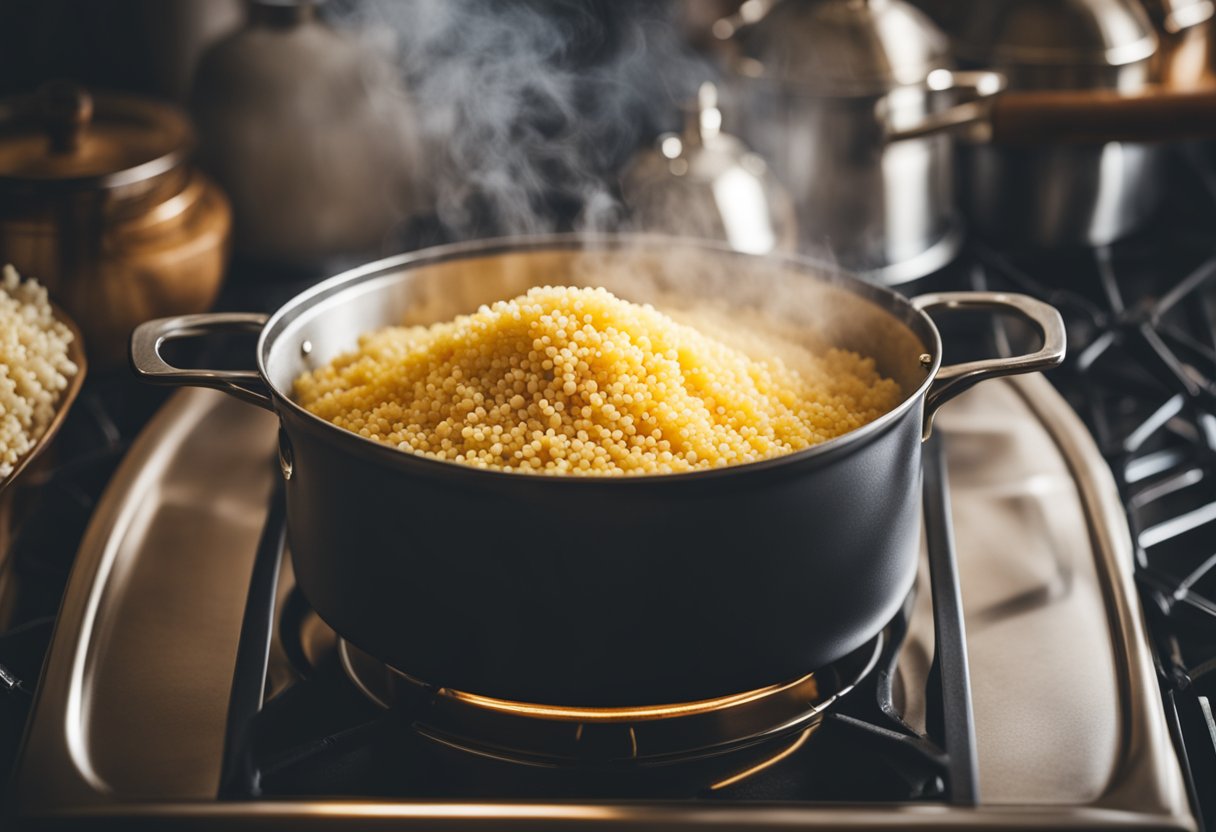
Once the couscous is reheated, it’s time to serve it. There are several ways to serve reheated couscous, depending on your preferences and the dish you are pairing it with.
One option is to serve it as a side dish, similar to rice. Couscous goes well with stews and soups, as well as roasted or grilled meats. You can also mix it with vegetables and spices to create a flavorful salad.
To serve as a side dish, simply spoon the reheated couscous onto a plate or bowl. You can add a pat of butter or a drizzle of olive oil for extra flavor. If you are serving it with a stew or soup, simply ladle the liquid over the couscous.
Another option is to mix the reheated couscous with protein and vegetables to create a complete meal.
You can use chicken, beef, or tofu as your protein source, and add any vegetables you like. Some good options include bell peppers, onions, and zucchini.
To make a couscous salad, mix the reheated couscous with your protein and vegetables, and then add your favorite spices and herbs. You can use a vinaigrette dressing or simply drizzle some olive oil and lemon juice over the top.
When serving reheated couscous, it’s important to keep it covered to prevent it from drying out. You can cover it with foil or a lid, or simply transfer it to a covered dish. This will help keep the couscous moist and flavorful.
Couscous is a great source of carbohydrates and fiber, making it a healthy addition to any meal. It’s also very versatile, and can be paired with a wide range of dishes.
Whether you’re serving it as a side dish or mixing it with protein and vegetables, reheated couscous is a delicious and easy meal option.
Health Benefits and Risks
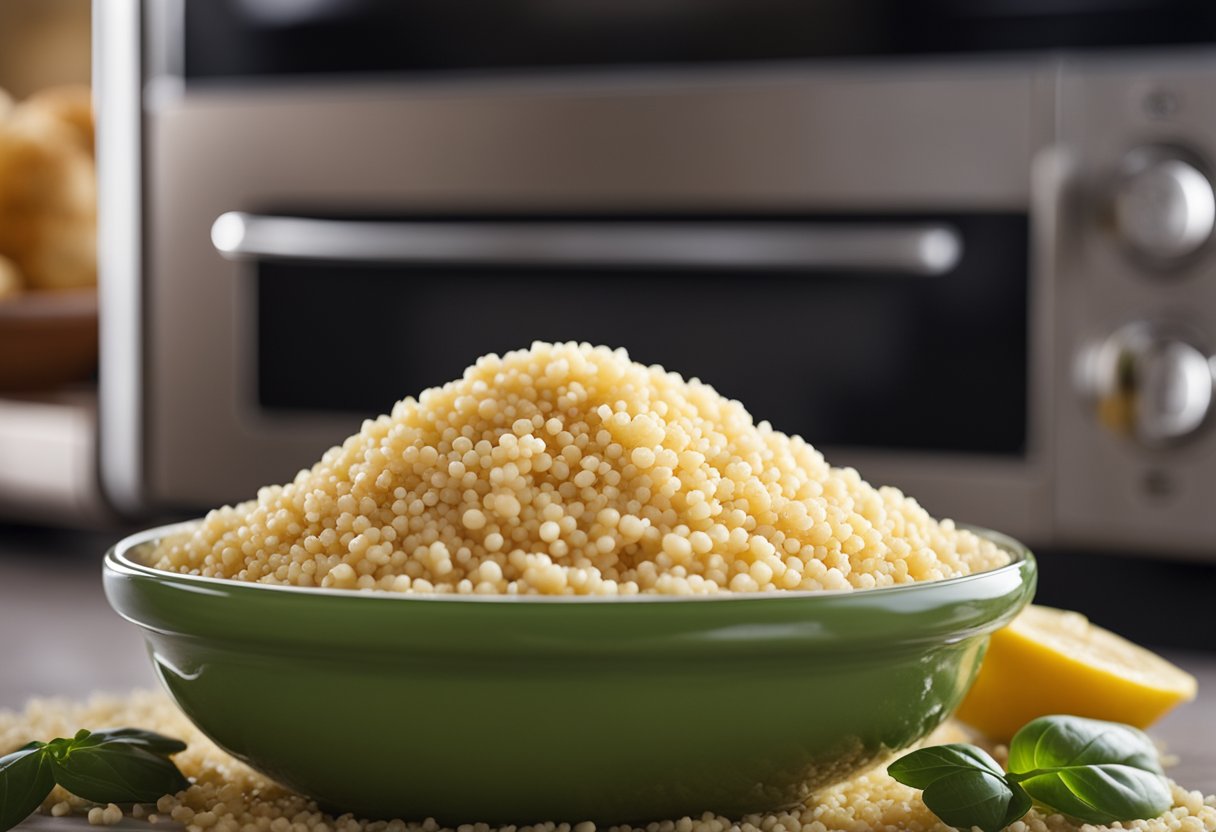
As a staple food in North African cuisine, couscous is a great source of energy and nutrients. Couscous is made from semolina wheat, which is high in protein, fiber, and complex carbohydrates.
It is also low in fat, making it a healthy alternative to other types of pasta.
However, there are some risks associated with reheating couscous. If it is not stored properly, it can become a breeding ground for bacteria, leading to food poisoning.
To avoid this, make sure to store your couscous in an airtight container in the refrigerator for no more than four days.
When reheating couscous, it is important to add a small amount of liquid, such as water or stock, to help the couscous absorb the liquid and prevent it from becoming dry and chewy.
It is also important to stir the couscous occasionally to ensure even heating.
In terms of calories, couscous is a relatively low-calorie food, with one cup of cooked couscous containing around 170 calories. It is also a low-fat food, with less than one gram of fat per cup.
The porosity of couscous makes it an ideal food to absorb liquids, making it a great addition to soups and stews. It can also be used as a base for salads, absorbing the dressing and adding a chewy texture to the dish.
Overall, reheating couscous is a hands-off approach that can save time in the kitchen. However, it is important to store and reheat it properly to avoid any health risks.
Frequently Asked Questions
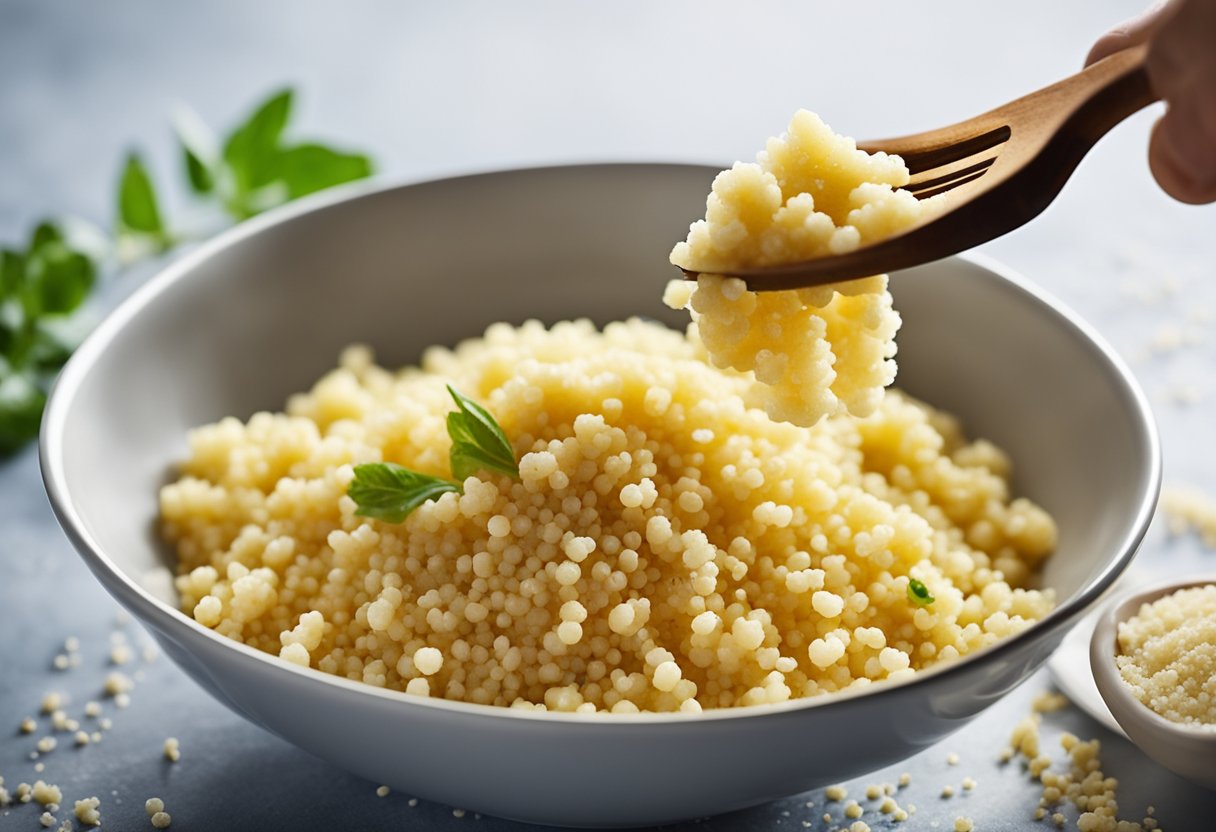
Can you reheat couscous twice?
It is not recommended to reheat couscous twice as it increases the risk of food poisoning. Reheating couscous can cause bacteria to multiply, and the longer it is left at room temperature, the higher the risk of harmful bacteria growing.
Therefore, it is best to reheat couscous only once and consume it immediately.
How to store cooked couscous?
Cooked couscous should be stored in an airtight container in the refrigerator. It is important to let the couscous cool down before storing it.
You can keep it in the fridge for up to four days. If you want to store it for a longer period, freeze it instead.
Can you freeze and reheat couscous?
Yes, you can freeze cooked couscous for up to six months. To freeze it, place it in an airtight container or a freezer bag.
When reheating, thaw it in the refrigerator overnight and then reheat it using a microwave or stovetop. Add a tablespoon of water or stock per cup of couscous to keep it moist.
How long is cooked couscous good for in the fridge?
Cooked couscous can be stored in the fridge for up to four days. It is important to let it cool down before storing it and to keep it in an airtight container.
Is couscous healthy?
Couscous is a healthy food option as it is low in fat and calories and high in fiber and protein. It is also a good source of vitamins and minerals such as B vitamins, iron, and selenium.
How do you freshen up couscous?
To freshen up couscous, you can add a little bit of olive oil or butter and gently fluff it with a fork. You can also add some fresh herbs, lemon juice, or chopped vegetables to enhance its flavor.




